Rosin
- Violin making tools / lutherie tools
- Guitar making tools
- Other tools for string instrument making
- Glues and accessories for string instrument making
- Cleaning / maintenance products for string instruments
-
Rosin
- Materials for string instrument making
- Guitar picks & plectra / plectrums
- Peg winders / string winders
- Strings for classical guitar
- Strings for string instruments
- Guitar hard cases & gig bags
- Cases and bags for string instruments
- Surface finishes for string instrument making
- Special offers for string instrument making
Rosin
EXPERTENWISSEN ABZIEHLEDER
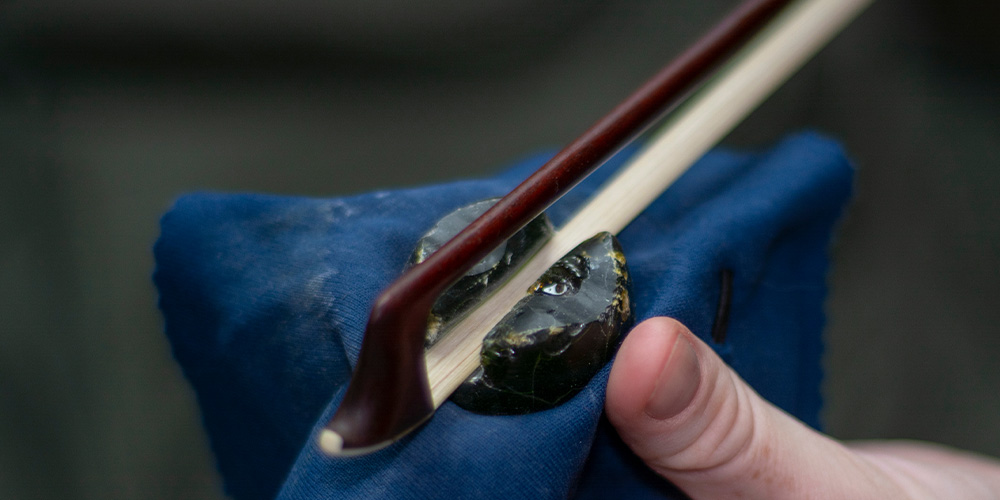
Rosin or violin resin is used to give the bow hairs the necessary adhesive force so that the strings of the stringed instrument can vibrate optimally. Rosin has a strong influence on the tone colour of the instrument, which is why it is worth testing which rosin produces the most harmonious sound in combination with the body and strings.
Rosin is produced from the resin of coniferous trees such as pine, fir, pine, larch or spruce. The name goes back to the ancient city of Kolophon in modern-day Greece, where the material was first systematically processed. The end product is created by heating and thickening the resin, resulting in a firm but brittle material. In the world of music, it is also known as bow resin or violin resin, especially when it is refined with special substances to influence the adhesive force or sound quality.
Differences and qualities:
Rosin is produced in different qualities. Normally, a dark-coloured rosin is slightly harder and preferable at higher room temperatures, whereas a light-coloured rosin tends to be softer and is therefore ideal for cool temperatures (churches in winter, open-air performances, etc.).
Which rosin for which strings?
The adhesive force should be matched to the type of strings:
- Steel strings: Low adhesive force (hard).
- Synthetic strings: Medium adhesive force (medium hard).
- Gut strings: High adhesive force (soft).
Which rosin for which instrument?
Each stringed instrument requires a specific adhesive force of the colophonium in order to achieve the optimum sound:
- Violin bow: Hardness of rosin, as very little adhesive force is required.
- Viola bow: Hardness rosin with slightly more adhesive force.
- Cello and bass viol bow: Medium-soft rosin for a balanced adhesive force.
- Double bass bow: Soft rosin for maximum adhesion.
Recommendations for rosin brands
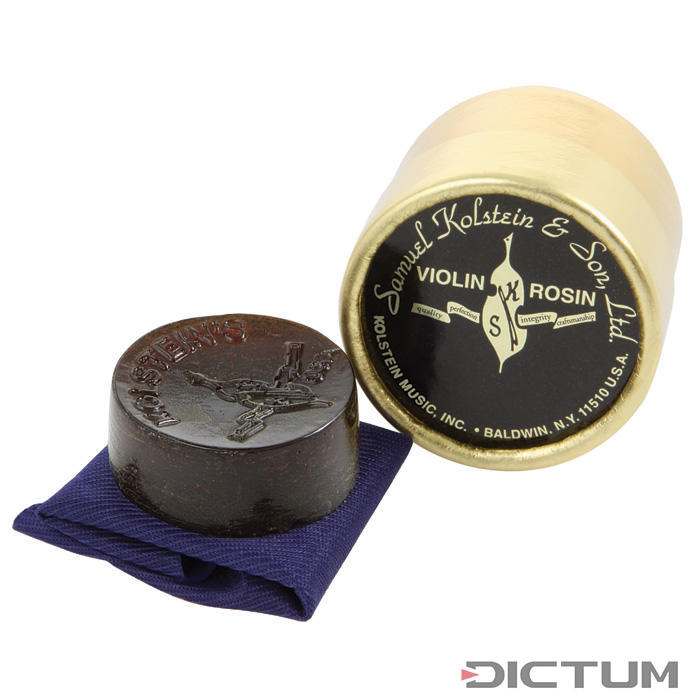
Kolstein
Kolstein has perfected rosin in various qualities: Violin, Viola, Cello Medium, Cello Normal, Bass in All-Weather, Soft or Hardness.
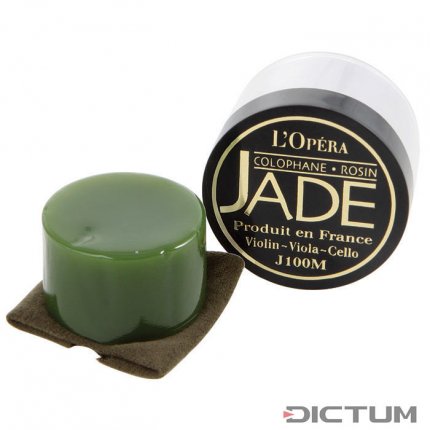
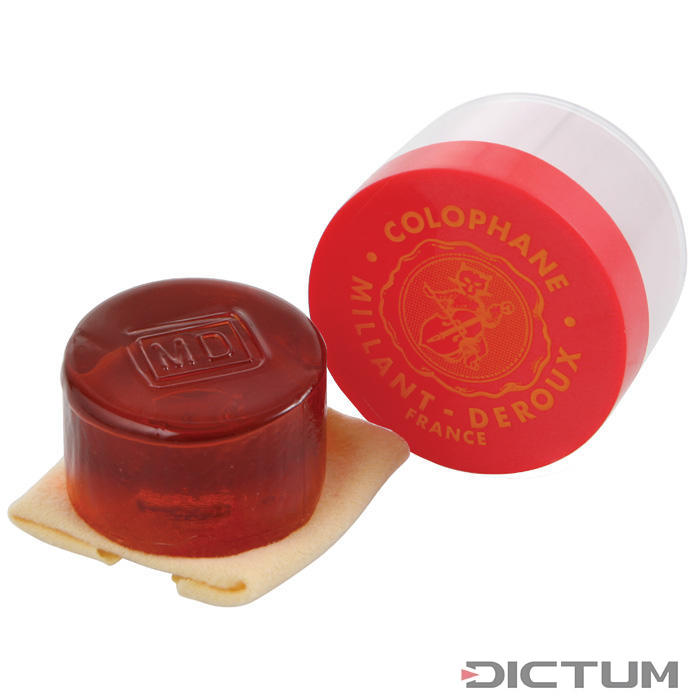
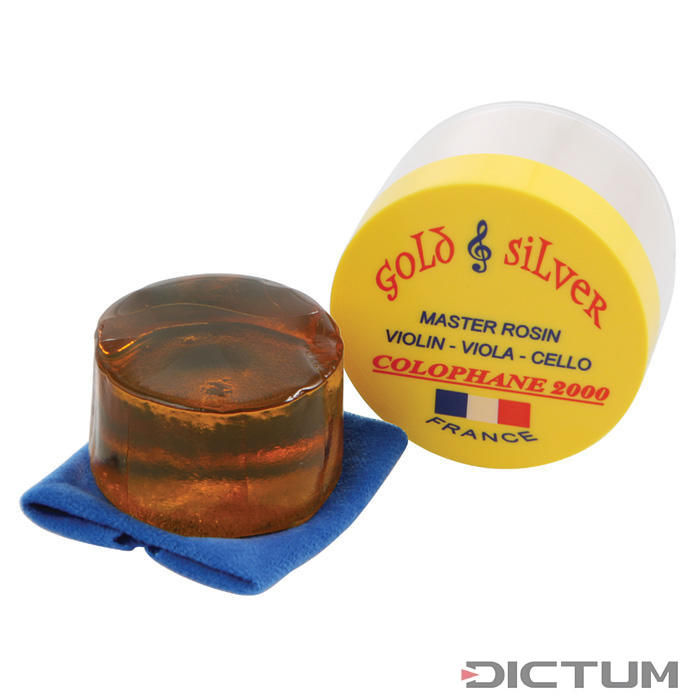
Thorvaldsson
Known for particularly dust-free products, produced in France with 100% natural ingredients.
Jade rosin: protects both the horsehair of the bows and the varnish of the stringed instruments.
Millant-Deroux rosin in dark and light colours. The light-coloured variety is slightly harder than the dark-coloured one. has a very good, even response. Produces a soft and warm tone. Has excellent adhesion to the strings.
Gold and Silver: Gold and SilverColophane 2000 is an alternative Thorvaldsson rosin that sounds brighter and more silvery than Millant rosin.
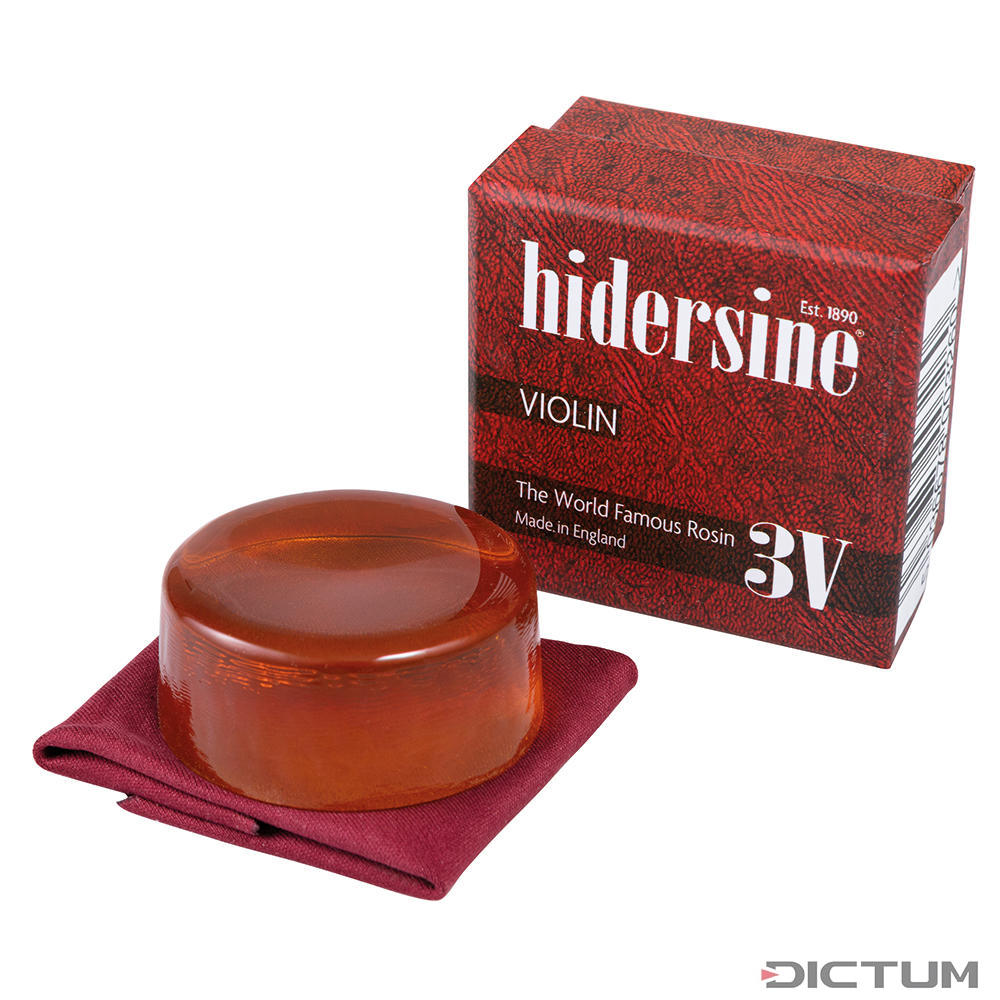
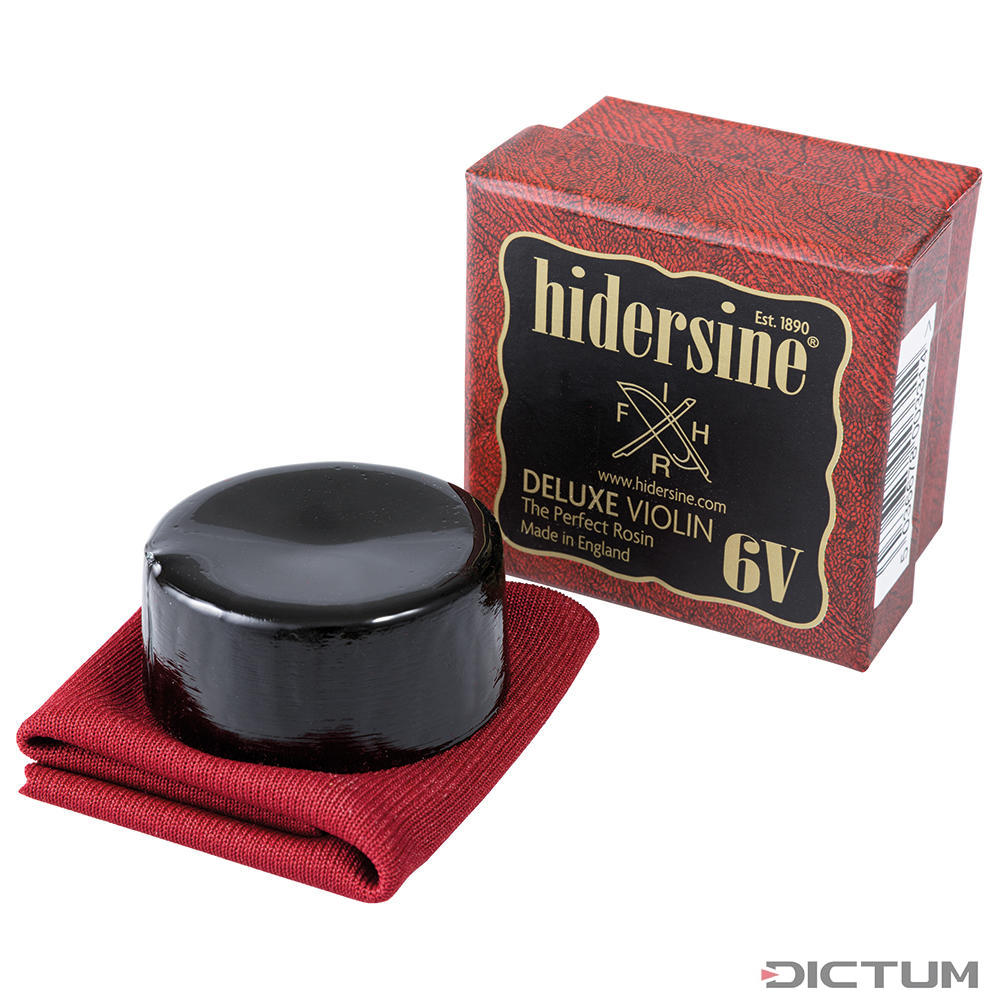
Hidersine
The standard and de luxe lines from the best English Manufacturer. A light amber rosin that is easy to apply and long-lasting.
Hidersine Standard
Hidersine De Luxe: Hidersine rosin is available in light and dark (de Luxe). The dark-coloured rosin is slightly softer and therefore has more adhesion. Suitable for gut and synthetic strings.
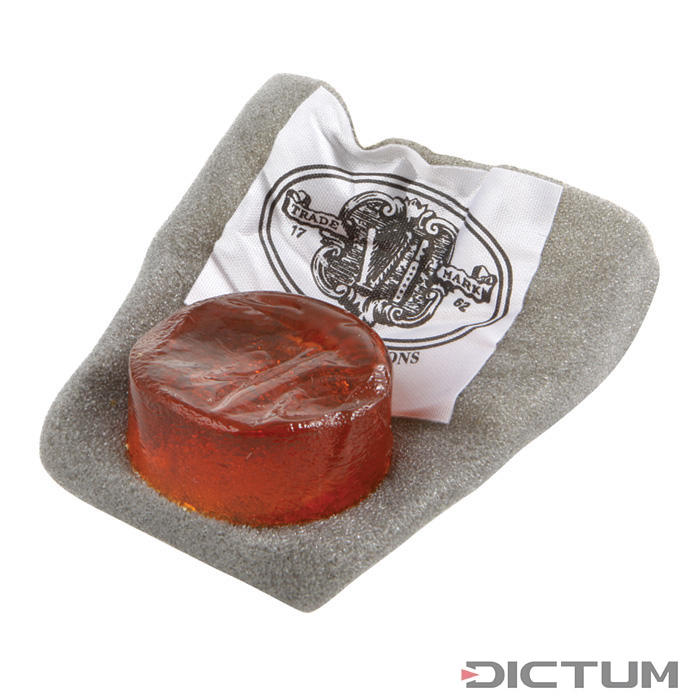
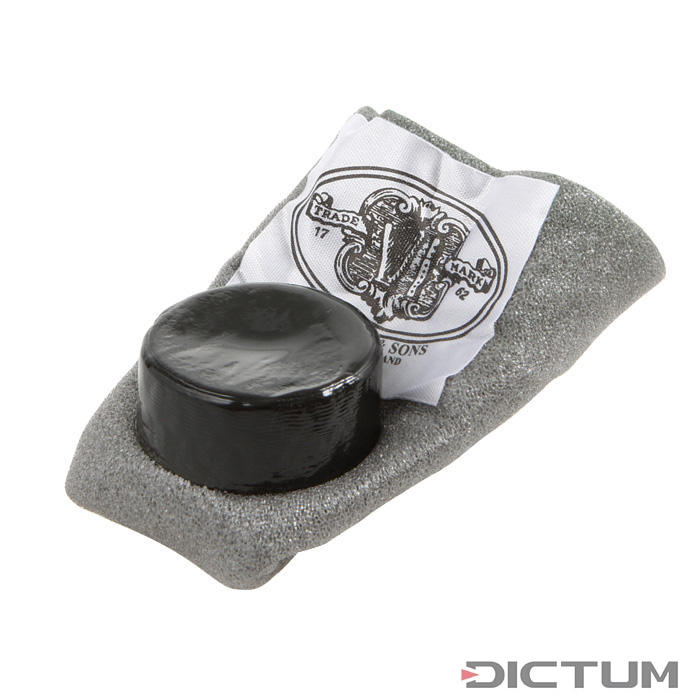
Hill
W.E. Hill & Sons: Hill rosin has a Lengthy tradition and is one of the best types on the market. It is produced according to a recipe from the famous Hill family of luthiers in England. The dark-coloured rosin is softer and has more adhesion than the light-coloured rosin, making it ideal for gut strings.
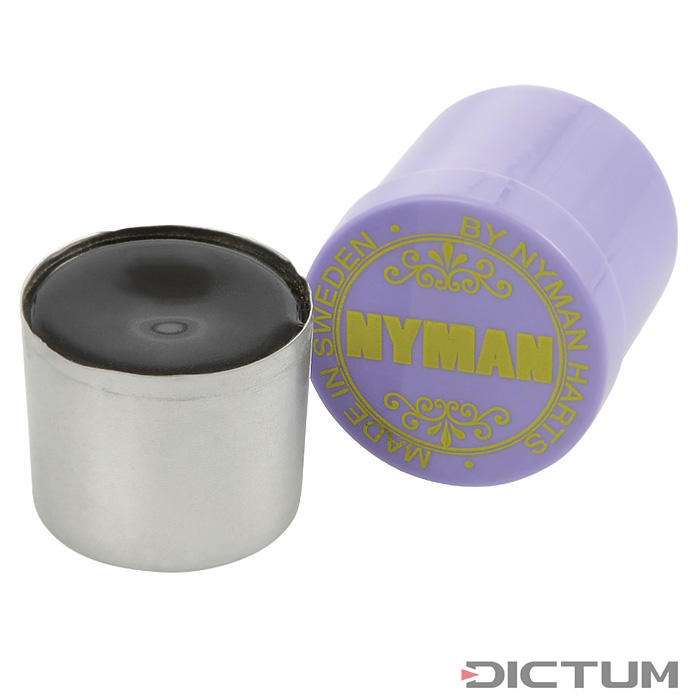
Nymann
Swedish premium bass rosin that is versatile and balanced.
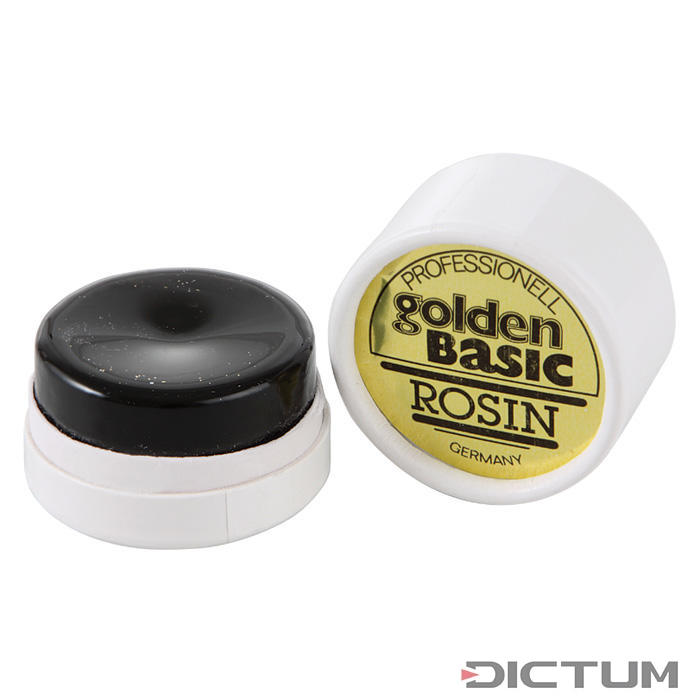
Geipel
Only pine resin is used for Production, sometimes with a cork sleeve or in a Scarves for clean fingers. There is even a rosin with a recipe for Allergens.
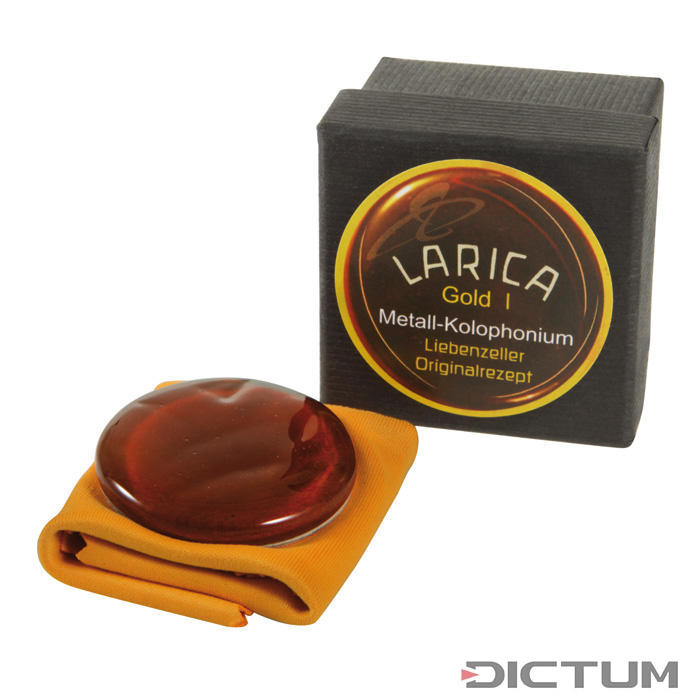
Larica
Production is based on the original Liebenzell colophonium recipe using pure larch resin with the addition of various metals. These produce a lively, warm and luminous sound. Economical to use, produces little dust.
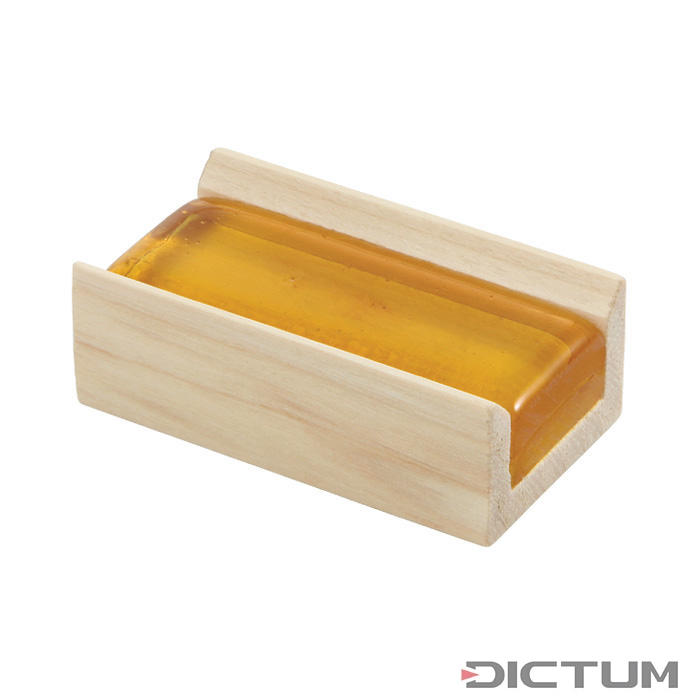
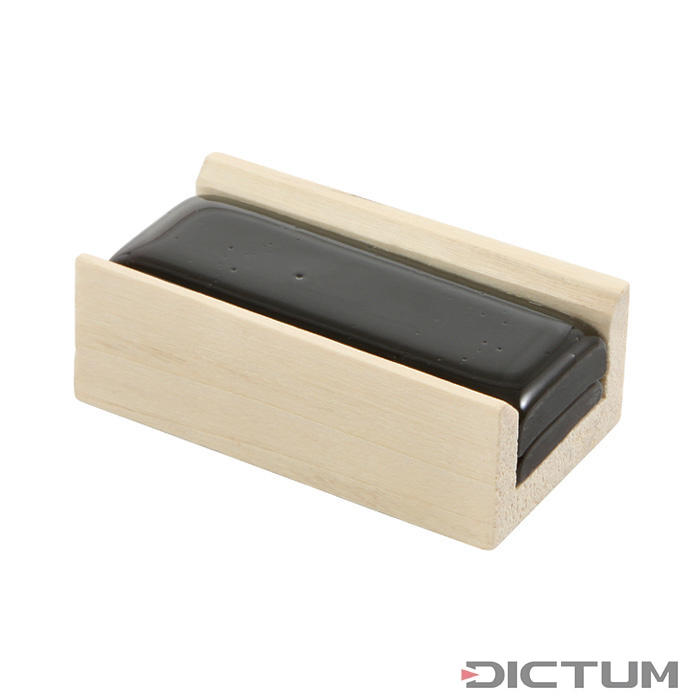
RDM
Inexpensive American product in wooden box.
Use of rosin
The use of violin rosin depends on various factors, including the frequency of playing, the type of instrument and the quality of the rosin used. In general, the bow should be treated regularly with an even layer of rosin to ensure optimum adhesion of the hair to the strings. For daily use, it is often sufficient to lightly colophonise the bow every one or two days. For intensive playing or before concerts, an additional layer may be necessary.
Quantity is crucial: less is often more. Excessive use leads to background noise, a sticky layer on the strings and possibly unwanted deposits on the instrument. Ideally, the bow should be drawn over the rosin two to four times in even strokes. With new bows or after longer breaks without rosin, several passes are necessary to sufficiently impregnate the horsehair.
It is important to apply the rosin evenly so that the bow offers consistent adhesion in all areas. Care should be taken not to press the rosin on too firmly so as not to damage the material. Regular cleaning of the strings and bow removes excess rosin and prevents the sound from being affected.
Interesting facts and trivia
- Historical significance: Rosin was not only important in music, but also in seafaring and medicine. It was used to seal the hulls of ships or as an ingredient in plasters and ointments.
- Dust-free variants: Some modern products, such as jade rosin, minimise dust formation and thus reduce soiling on the instrument.
- Change in sound: Different rosins influence the tone colour of an instrument. For example, Millant-Deroux rosin produces a warm and mellow tone, while Gold & Silver Colophane 2000 offers a brighter, silvery sound quality.
Common mistakes when handling rosin
- Apply too much: Excess violin rosin leads to background noise and soiling of the instrument and bow.
- Incorrect storage: If rosin is exposed to extreme temperatures, it loses its properties.
- Choosing unsuitable quality: Rosin that is too soft on steel strings can become sticky, while rosin that is too Hardness on gut strings produces inadequate sound.
Rosin is an essential component for every string player, and the right choice and care can significantly improve the sound quality and playability of the instrument. Whether violin, viola, cello or double bass - the choice of the right rosin depends on individual preferences, the instrument and the strings. With a variety of brands and degrees of hardness, DICTUM offers musicians a wide choice.




















